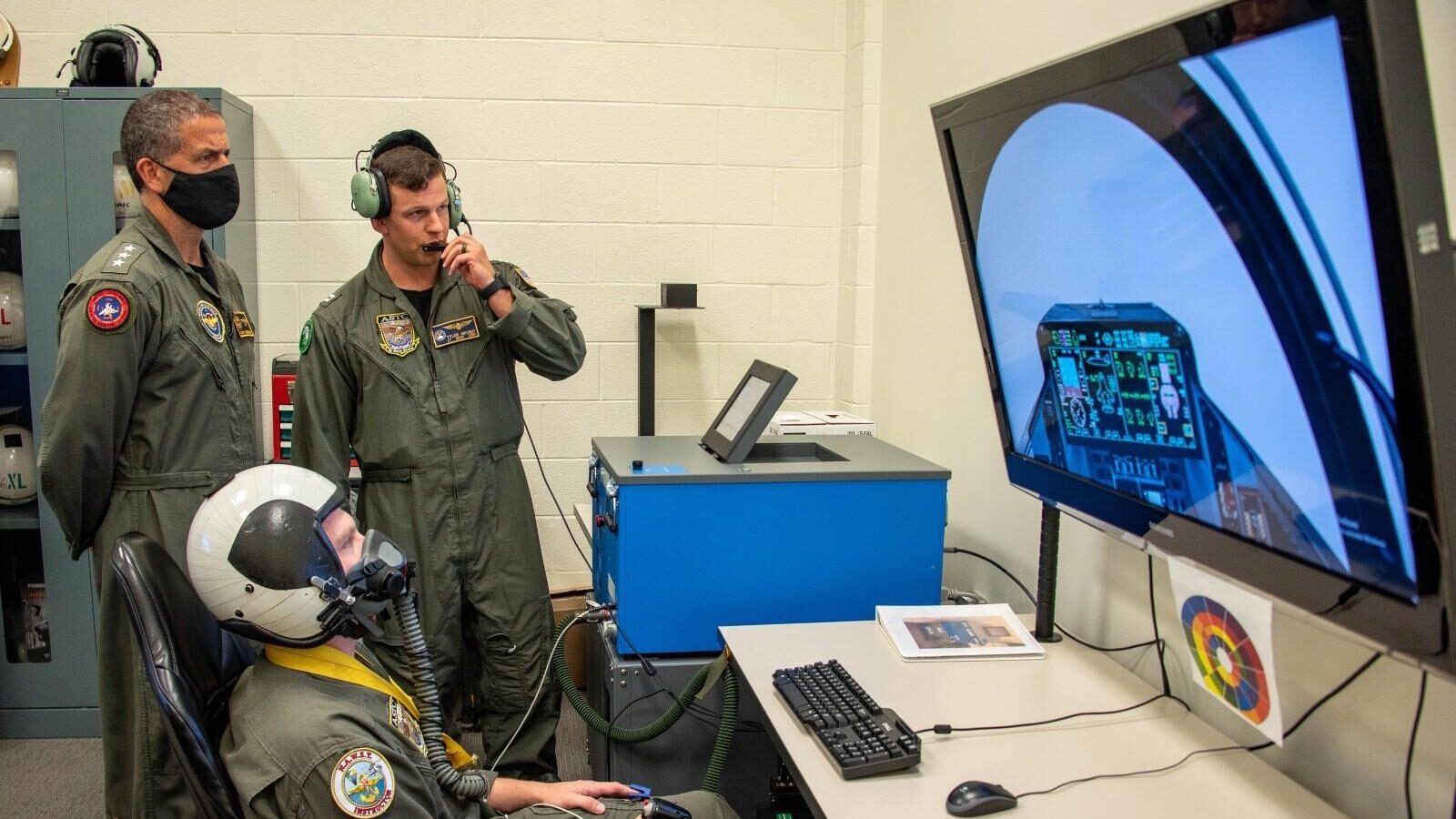In 2017, the US Navy was startled as the Physiological Episodes (PE) among naval aviators suddenly skyrocketed, leading to a comprehensive investigation. Five years later, the US Navy developed a ‘Mask on Breathing Device’ to combat a fatal event due to physiological episodes mid-air.
US Army Soldiers To Get Mixed Reality Goggles With Night Vision In 2023; China Also Trains With VR For Close Combat
In its ongoing battle against the phenomenon known as physiological episodes, the Navy demonstrated a new training tool intended to prepare its pilots for potential adverse situations in the air by stimulating the consequences of oxygen deprivation.
On July 7, the service gave senior brass a demonstration of its “Mask on Breathing Device,” which allows pilots to experience symptoms that could develop during flight and result in a physiological crisis, such as hypoxia, hyperventilation, and air hunger.
The service has already provided ten devices, and 35 were to be installed across the fleet’s training facilities by summer when the demonstration was held in July.
Physiological episodes are characterized by a pilot’s body adversely reacting to the intense flight pressures, combined with issues with the aircraft. PE can cause cognitive impairment, numbness, tingling, lightheadedness, behavioral changes, and fatigue that may be life-threatening for pilots.

For instance, one of the reasons for Japan’s Air Self-Defense Air Force F-35 crash of 2019 was spatial disorientation. For several years, the US Navy and the US Air Force have investigated the cause behind PEs.
The US Navy, for one, has been at the end of a terrible spike in physiological episodes in recent years.
The US Navy thus seeks to familiarize or acclimatize pilots with the feeling of an impending episode before they take to the skies as part of their training. This development comes even as the investigation conducted by the service into the spike in PE cases could not identify any single cause that led to it.
“This groundbreaking training device enables naval aviators to recognize how they respond to breathing distress and allows them time to execute emergency procedures before becoming incapacitated,” Capt. Kevin McGee, a service program manager, said in a July 12 statement.
The Curious Case Of PE Spike 5 Years Ago
According to Navy brass, the service had 71 incidents per 100,000 flying hours in the T-45 trainer in 2017, the highest PE rate ever recorded. The F-18 of the US Navy also encountered several such incidents. The sudden spike was so sharp that the trainers refused to fly these aircraft with pilots.
In 2019, the service launched an investigation to determine the “root cause” of the episodes because of the pressure from those statistics and the mounting outrage on Capitol Hill.
Two roots cause corrective action (RCCA) teams, one looking at the T-45 Goshawk trainer jet and one looking at the F-18 family of fighters, were formed by Rear Admiral Fredrick Luchtman, the commander of the Naval Safety Center and the head of the Physiological Episodes Action Team (PEAT).

The teams spent three years and $50 million on this project, producing more than 8,000 pages of technical paperwork and coming up with 567 recommendations for future cockpit safety measures for pilots and weapons officers.
The findings of that study resulted in several technical modifications made to the service’s aircraft to assist pilots in recognizing when an episode might occur, noted USNI News.

However, the teams could not find a single reason for the phenomenon. They conclude that physiological episodes have multiple fundamental causes. The environment in the cockpit and the pilot’s health are just two of the many variables that could cause a pilot to pass out mid-flight.
Peaking in May 2017, the number of physiological incidents progressively declined, according to the admiral who oversaw the root cause inquiry. Not knowing the root cause, the Navy probably decided to prepare its aviators to avert fatality by training them with the physical sensations incurred mid-flight while they are safe on earth.
Research On Physiological Episodes Is Tenuous
In 2018, the US Air Force and the US Navy announced a Joint Physiological Action Team called the J-PEAT. It was an effort to jointly research the cause behind the unexplained physiological distress experienced by pilots mid-air.
In 2020, months after the famed F-35A crash, a promising research, and development project was started by a group of scientists from Ball Aerospace, Collins Aerospace, the University of Iowa, and the Air Force Research Lab (AFRL) to study the physiological episode phenomena in air, through the course of an aircraft’s flight.
It was aimed at examining how the use of a multi-variant, multi-sensor approach to real-time monitoring of pilot physiological conditions could lead to the creation of techniques that can help decrease the number of Unexplained Physiological Events (UPEs) experienced by military pilots in a variety of fighter jets, helicopters, and other aircraft.
The @usairforce and @@USNavy recently announced their Joint Physiological Episodes Action Team, or J-PEAT. In an effort to Force Integrate, the Air Force will also rename their Unexplained Physiological Events Integration Team to the AF-PEAT.
FULL STORY: https://t.co/d4U0YFGpty pic.twitter.com/tsRq44VUTB
— Airman Magazine (@AirmanMagazine) November 1, 2018
In another development, a Defense Department Inspector General report stated in September 2020 that the Air Force was working to improve safety and reduce pilot physiological events in some of the aircraft most commonly cited for those issues.
Still, the service can do only so much to minimize the risk due to human error and the “hazards inherent to the aviation occupation.”
Even though the report offered no new recommendations, it was widely acknowledged that the issue would persist for a long time until the service sought a workable solution. The stimulation and masks would likely help prepare pilots for contingencies.
- Contact the author at sakshi.tiwari9555 (at) gmail.com
- Follow EurAsian Times on Google News




